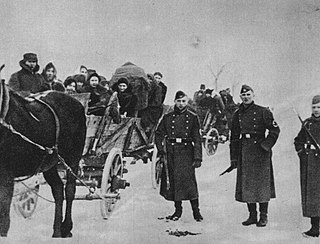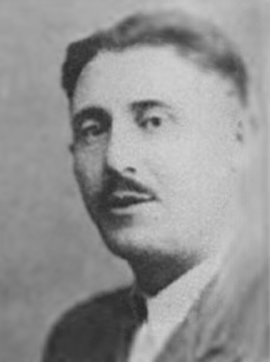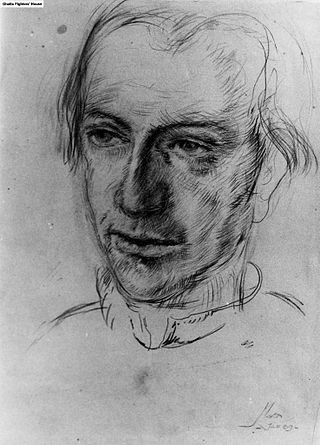
Nazi Germany used six extermination camps, also called death camps, or killing centers, in Central Europe, primarily Occupied Poland, during World War II to systematically murder over 2.7 million people – mostly Jews – in the Holocaust. The victims of death camps were primarily murdered by gassing, either in permanent installations constructed for this specific purpose, or by means of gas vans. The six extermination camps were Chełmno, Belzec, Sobibor, Treblinka, Majdanek and Auschwitz-Birkenau. Extermination through labour was also used at the Auschwitz and Majdanek death camps. Millions were also murdered in concentration camps, in the Aktion T4, or directly on site.

Camp Westerbork, also known as Westerbork transit camp, was a Nazi transit camp in the province of Drenthe in the Northeastern Netherlands, during World War II. It was located in the municipality of Westerbork, current-day Midden-Drenthe. Camp Westerbork was used as a staging location for sending Jews, Sinti and Roma to concentration camps elsewhere.

Belzec was a Nazi German extermination camp in occupied Poland. It was built by the SS for the purpose of implementing the secretive Operation Reinhard, the plan to murder all Polish Jews, a major part of the "Final Solution", the overall Nazi effort to complete the genocide of all European Jews. Before Germany's defeat put an end to this project more than six million Jews had been murdered in the Holocaust. The camp operated from 17 March 1942 to the end of June 1943. It was situated about 500 m (1,600 ft) south of the local railroad station of Bełżec, in the new Lublin District of the General Government territory of German-occupied Poland. The burning of exhumed corpses on five open-air grids and bone crushing continued until March 1943.

Drancy internment camp was an assembly and detention camp for confining Jews who were later deported to the extermination camps during the German occupation of France during World War II. Originally conceived and built as a modernist urban community under the name La Cité de la Muette, it was located in Drancy, a northeastern suburb of Paris, France.

Umschlagplatz was the term used during The Holocaust to denote the holding areas adjacent to railway stations in occupied Poland where Jews from ghettos were assembled for deportation to Nazi death camps. The largest collection point was in Warsaw next to the Warsaw Ghetto. In 1942 between 254,000 – 265,000 Jews passed through the Warsaw Umschlagplatz on their way to the Treblinka extermination camp during Operation Reinhard, the deadliest phase of the Holocaust in Poland. Often those awaiting the arrival of Holocaust trains, were held at the Umschlagplatz overnight. Other examples of Umschlagplatz include the one at Radogoszcz station - adjacent to the Łódź Ghetto - where people were sent to Chełmno extermination camp and Auschwitz.

Treblinka is a village located in eastern Poland, situated in the present-day district of Gmina Małkinia Górna, within Ostrów Mazowiecka County in Masovian Voivodeship, some 80 kilometres north-east of Warsaw. The village lies close to the Bug River. It has 350 inhabitants.

Helga Deen was a Jewish diarist whose diary was discovered in 2004, which describes her stay in a Dutch prison camp, Kamp Vught, where she was brought during World War II at the age of 18.

Kamp Amersfoort was a Nazi concentration camp near the city of Amersfoort, the Netherlands. The official name was "Polizeiliches Durchgangslager Amersfoort", P.D.A. or Amersfoort Police Transit Camp. 37,000 prisoners were held there between 1941 and 1945. The camp was situated in the northern part of the municipality of Leusden, on the municipal boundary between Leusden and Amersfoort in the central Netherlands.

Herzogenbusch was a Nazi concentration camp located in Vught near the city of 's-Hertogenbosch, Netherlands. The camp was opened in 1943 and held 31,000 prisoners. 749 prisoners died in the camp, and the others were transferred to other camps shortly before Herzogenbusch was liberated by the Allied Forces in 1944. After the war, the camp was used as a prison for Germans and for Dutch collaborators. Today there is a visitors' center which includes exhibitions and a memorial remembering the camp and its victims.

Holocaust trains were railway transports run by the Deutsche Reichsbahn and other European railways under the control of Nazi Germany and its allies, for the purpose of forcible deportation of the Jews, as well as other victims of the Holocaust, to the Nazi concentration, forced labour, and extermination camps.

Leon Felhendler was a Polish resistance fighter known for his role in organizing the 1943 prisoner uprising at Sobibor extermination camp together with Alexander Pechersky.

Nieuw Vosseveld is a high-security penal institution in Vught, Netherlands. It is part of the Custodial Institutions Agency of the Ministry of Justice and Security.

Selma Engel-Wijnberg was one of only two Dutch Jewish Holocaust survivors of the Sobibor extermination camp. She escaped during the 1943 uprising, hid in Poland, and survived the war. Engel-Wijnberg immigrated to the United States from Israel with her family in 1957, settling in Branford, Connecticut. She returned to Europe again only to testify against the war criminals of Sobibor. In 2010 she was in the Netherlands to receive the governmental honour of Knight in the Order of Oranje-Nassau.
This article presents the timeline of events at Treblinka extermination camp during the most deadly phase of the Holocaust in World War II. All deportations were from German occupied Poland, except where noted. In most cases the number of deportees are not exact figures, but rather approximations.
Poniatowa concentration camp in the town of Poniatowa in occupied Poland, 36 kilometres (22 mi) west of Lublin, was established by the SS in the latter half of 1941, initially to hold Soviet prisoners of war following Operation Barbarossa. By mid-1942, about 20,000 Soviet POWs had perished there from hunger, disease and executions. The camp was known at that time as the Stalag 359 Poniatowa. Afterwards, the Stammlager was redesigned and expanded as a concentration camp to provide slave labour supporting the German war effort, with workshops run by the SS Ostindustrie (Osti) on the grounds of the prewar Polish telecommunications equipment factory founded in the late 1930s. Poniatowa became part of the Majdanek concentration camp system of subcamps in the early autumn of 1943. The wholesale massacre of its mostly Jewish workforce took place during the Aktion Erntefest, thus concluding the Operation Reinhard in General Government.

Max van Dam was a Dutch artist born in Winterswijk. He was murdered in the Sobibor extermination camp.

The Holocaust in the Netherlands was organized by Nazi Germany in occupied Netherlands as part of the Holocaust across Europe during the Second World War. The Nazi occupation in 1940 immediately began disrupting the norms of Dutch society, separating Dutch Jews in multiple ways from the general Dutch population. The Nazis used existing Dutch civil administration as well as the Dutch Jewish Council "as an invaluable means to their end".

National Monument Camp Vught is a memorial site with a museum located in Vught, in the Dutch province of North Brabant. It commemorates the concentration camp known as Kamp Vught that was established there during World War II. The memorial was founded in 1990, with an exhibition building added in 2002. The monument is located on the northeastern tip of the former camp grounds.
























